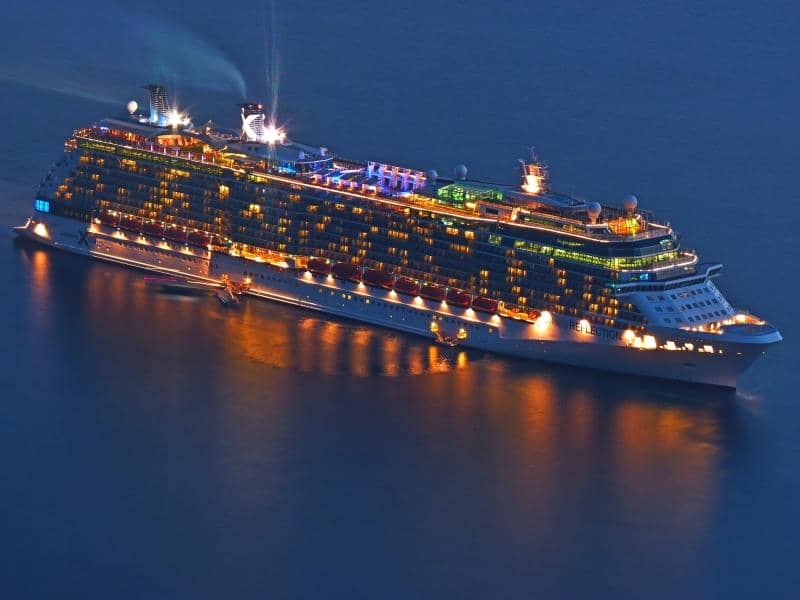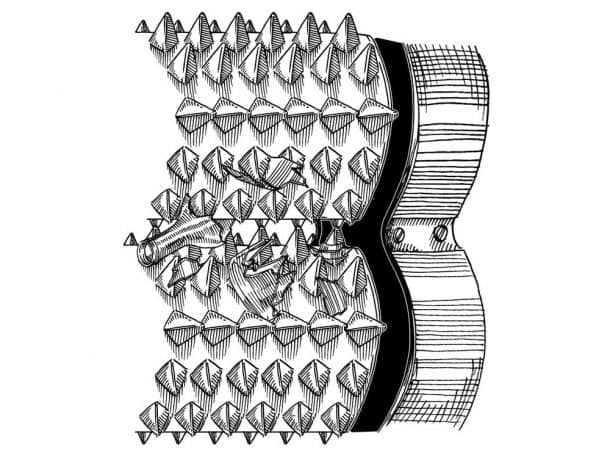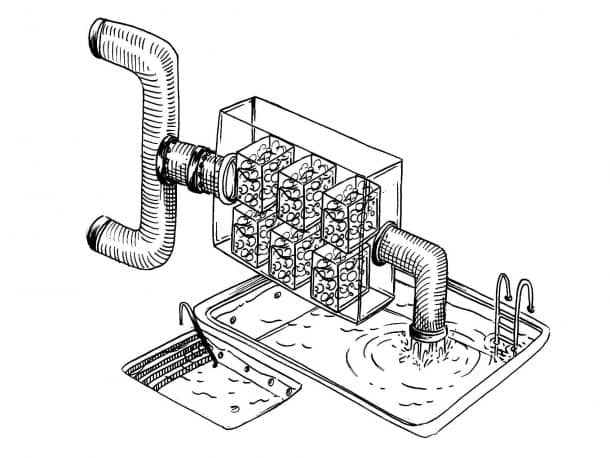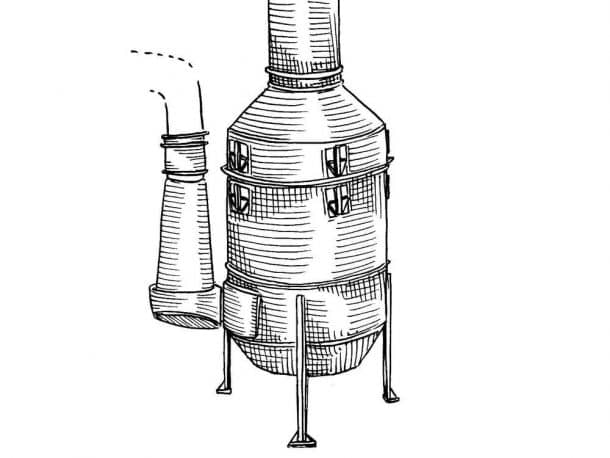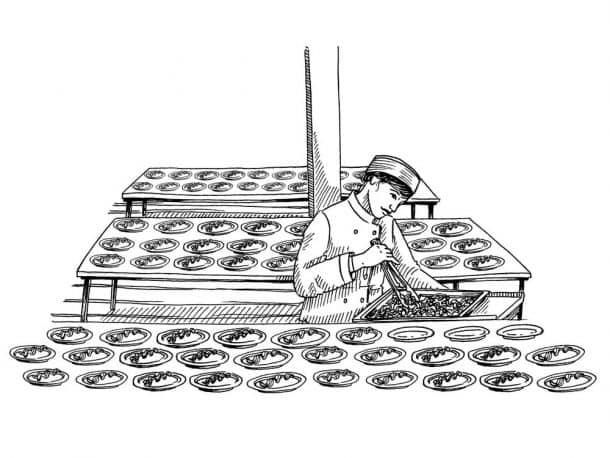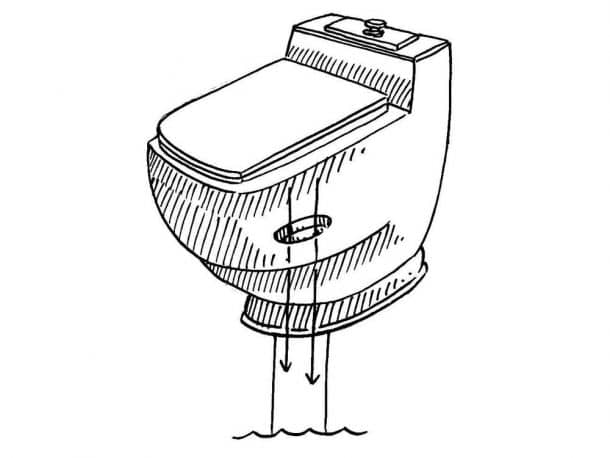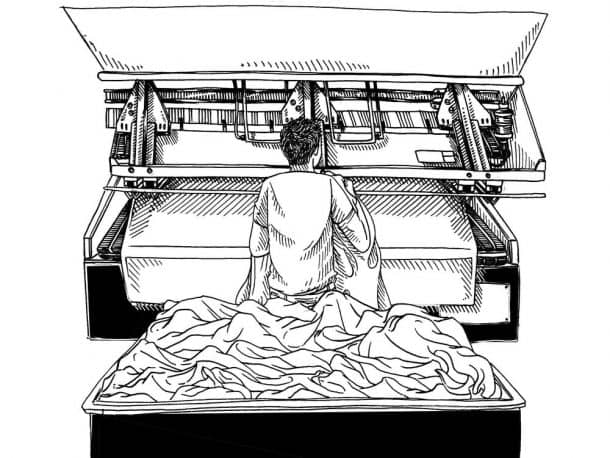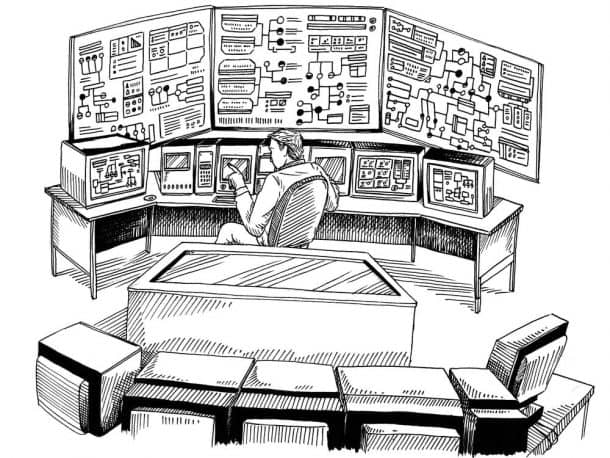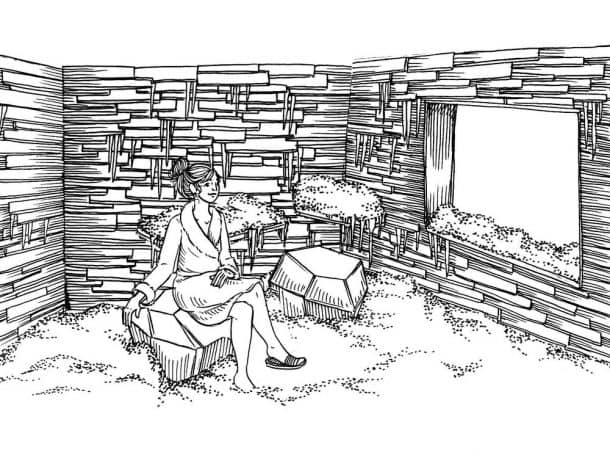A city is not just made up of a bunch of houses and lots of people. It is a complicated system that goes far deeper than the ground surface and much higher than the rooftops. Cruise ships are like cities to the ocean. The largest of them carry thousands of people for months at a time. This floating city needs all kind of systems that you have in your house; only they need to be much bigger. The washing machines wash thousands of sheets every day, hundreds of gallons of salt-free drinking water, tons and tons of food, water filtration systems for pools, and most of all, a proper system to dispose of hundreds of pounds of poop. Beyond the massive floating mechanism of the cruise ships are dozens of other systems that take care of everyday life for the people on board.
Garbage Disposal
The ships have waste recycling plants that are equipped with hydraulic presses that squeeze cardboard and aluminum into blocks, giant glass crushers spanning over 50 cubic feet, that turn glass bottles to tiny pellets, and the rest of nonrecyclable waste is burned in incinerators. The food waste is made into a pulp and fed to the fish in the sea.
Water Filtration
The freshwater swimming pools onboard the giant ships use treated water from the sea. This water is either obtained using reverse-osmosis membranes that filter out the salt, or by using evaporators that use heat from the engine to get fresh water vapors. The treated water then goes on to the swimming pools.
Exhaust Scrubbers
The exhaust systems on the mega liners do not release toxic sulfur oxides into the atmosphere. The exhaust enters into a cylindrical tank, which sprayed with a solution of caustic soda and seawater sprays from all sides trapping the sulfur oxides. This solution then falls into a storage tank deep into the ship.
Food
The thousands of passengers on board a massive cruise ship can use up to 23,000 pounds of flour, and 42,000 pineapples in just one year. And this does not even include all the other kinds of luxury foods and delicacies that are served. All of this food is stored in freezers the size of a ballroom. The food is delivered to the 1000-seat dining rooms on escalators.
Poop
The toilets are connected to vacuum suction lines that pack the excretions into marine sanitation farms that extract the water, treat it, and pump it back into the ocean. The remaining sludge is digested by aerobic bacteria in storage tanks and later offloaded on the shore, nearly every month.
Laundry
Hundreds of pounds of sheets are loaded into large capacity washing machines. When washed, huge machines iron and press the sheets, and another 27-foot wide device is dedicated to stretching and folding these sheets into rectangles.
Control Room
The control room on the cruise ship lies two floors below the passenger decks, along with the engines, and keeps control of the air-conditioning compressors, diesel generators, and other systems. In the most advanced of the ships, these controls are displayed on tables with grand touch screens.
Entertainment
The upper decks hold most of the fun stuff onboard. The spa rooms are filled with snow by cold compressed air and water nozzles. If you want to enjoy extreme sports, some ships allow surfing and even skydiving. 23 feet high chambers blast winds of hundreds of miles an hour that simulates a skydive.
So a cruise ship is a complicated structure, and having watched Titanic, everyone does have a slight idea of how life works on the mega liners.
Source: Amy Schellenbaum | Popular Science
Illustrations: Lucy Engelman

